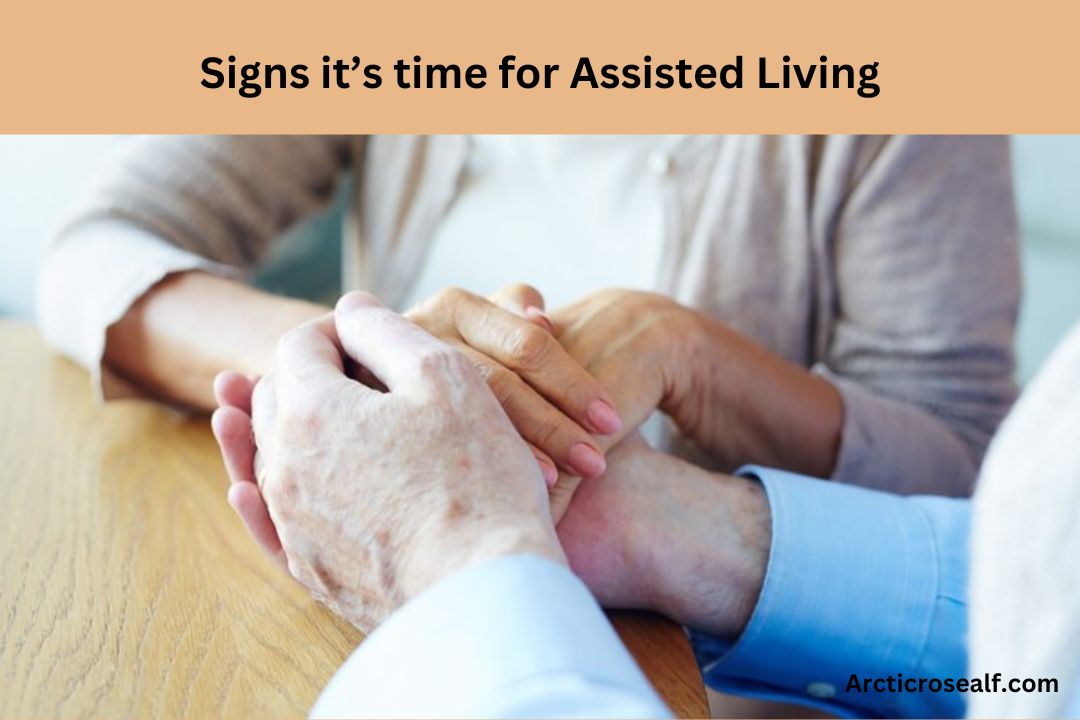
When a loved one reaches a certain age or experiences significant health challenges, it can be difficult to determine when they may need more help than what family and friends can provide.
Assisted living facilities can offer the support they need in a comfortable, secure, and community-oriented environment. However, recognizing the signs that it’s time for this change can be a tough decision.
Here are some key signs indicating it may be time to consider Arctic Rose Assisted Living Facilities for your loved one.
One of the most obvious signs it’s time for assisted living is a noticeable decline in physical health. This might include frequent falls, decreased mobility, difficulty with personal hygiene, or chronic health conditions that are more challenging to manage alone.
If your loved one has difficulty performing basic daily tasks like dressing, bathing, or eating, they may need professional help. Assisted living facilities offer medical care and assistance with these tasks while ensuring their physical health is closely monitored.
As we age, it’s normal to experience some memory lapses. However, if your loved one is experiencing significant memory loss, confusion, or cognitive decline, it could be a sign of conditions like dementia or Alzheimer’s disease.
Difficulty remembering appointments, medications, or even recognizing family members can be a significant concern.
Assisted living communities often have specialized care for individuals with cognitive impairments and can provide the attention necessary to ensure safety and well-being.
If your loved one is struggling to keep track of their medications, whether through forgetfulness, confusion about dosages, or missing doses altogether, this can lead to serious health consequences.
Many people take multiple medications for different conditions, and managing these can become overwhelming.
Assisted living facilities typically offer medication management services to ensure residents take their medications correctly, reducing the risk of complications and hospitalizations.
Another sign it may be time for assisted living is a noticeable withdrawal from social activities. If your loved one no longer engages with family or friends or expresses feelings of loneliness, this can negatively impact both their mental and physical health.
Assisted living communities foster social interaction by offering various activities, clubs, and group events. This helps residents stay mentally engaged and combats the isolation many seniors experience alone.
A decline in appetite, poor nutrition, or significant weight loss can show that your loved one struggles to maintain a healthy diet. It could be due to difficulty cooking for themselves, forgetting to eat, or simply losing interest in food.
Assisted living communities provide nutritious meals prepared by staff, tailored to meet each resident’s dietary needs.
With the help of on-site chefs and caregivers, your loved one will receive balanced meals regularly, ensuring their overall health is maintained.
When a person’s ability to care for themselves diminishes, it often shows in their appearance and living environment.
If your loved one is no longer keeping up with basic hygiene routines (like showering or brushing their teeth) or their home is becoming dirty or unsafe, it might be a sign that they can no longer manage their daily tasks.
Assisted living supports personal hygiene and ensures the living space is clean and safe.
Falls are one of the leading causes of injury in older adults, and safety can become a primary concern if your loved one is living alone.
Poor vision, balance problems, or cognitive decline can increase the risk of accidents. Consider a safer environment if you notice that your loved one has frequent falls or near-misses or if their home is filled with hazards like clutter, loose rugs, or dim lighting.
Assisted living facilities are designed with safety in mind, with features like handrails, non-slip floors, and emergency response systems to ensure residents are always safe.
As time passes, many seniors find it increasingly difficult to manage everyday activities that were once second nature.
Tasks like laundry, cooking, cleaning, or even driving may become overwhelming.
If your loved one struggles to manage their home and daily activities or has stopped participating in these tasks altogether, assisted living may provide the structure and support they need to maintain their independence while ensuring that all their basic needs are met.
If you or other family members have been acting as the primary caregivers for your loved one, you may begin to experience caregiver burnout.
Providing care can be physically and emotionally exhausting, particularly if your loved one’s needs are increasing. If you feel overwhelmed or unsure how to continue managing the caregiving responsibilities, assisted living could provide a valuable support system for you and your loved one.
It allows family members to focus on spending quality time with their loved ones rather than being solely responsible for their daily care.
Recognizing the signs that it’s time for assisted living is not always easy, but it’s essential to prioritize the health, safety, and well-being of your loved one.
Assisted living communities provide a balance of independence, support, and care that can significantly improve their quality of life. If you notice these signs in your loved one, it may be time to explore options and discuss the best path forward together.
Deciding to transition to assisted living can be emotional, but with the proper care, your loved one can enjoy a higher level of comfort, security, and social connection.